Mode d’emploi Philips HD1172 Fer à repasser
Besoin d'un mode d’emploi pour votre Philips HD1172 Fer à repasser ? Ci-dessous, vous pouvez consulter et télécharger gratuitement le mode d’emploi PDF en français. Ce produit a actuellement 5 questions fréquemment posées, 0 commentaires et 0 votes. Si ce n'est pas le mode d’emploi que vous souhaitez, veuillez nous contacter.
Votre produit est défectueux et le mode d’emploi n’offre aucune solution ? Rendez-vous à un Repair Café pour obtenir des services de réparation gratuits.
Mode d’emploi
Loading…


Loading…
Évaluation
Dites-nous ce que vous pensez du Philips HD1172 Fer à repasser en laissant une note de produit. Vous voulez partager vos expériences avec ce produit ou poser une question ? Veuillez laisser un commentaire au bas de la page.En savoir plus sur ce mode d’emploi
Nous comprenons qu’il est agréable d’avoir un mode d’emploi papier pour vos Philips HD1172 Fer à repasser. Vous pouvez toujours télécharger le mode d’emploi depuis notre site Web et l’imprimer vous-même. Si vous souhaitez disposer d’un mode d’emploi original, nous vous recommandons de contacter Philips. Ils pourront peut-être fournir un mode d’emploi original. Recherchez-vous le mode d’emploi de votre Philips HD1172 Fer à repasser dans une autre langue ? Choisissez votre langue préférée sur notre page d’accueil et recherchez le numéro de modèle pour voir si nous l’avons disponible.
Caractéristiques
| Marque | Philips |
| Modèle | HD1172 |
| Catégorie | Fers à repasser |
| Type de fichier | |
| Taille du fichier | 4.62 MB |
Tous les modes d’emploi pour Philips Fers à repasser
Plus de modes d’emploi de Fers à repasser
Foire aux questions sur Philips HD1172 Fer à repasser
Notre équipe d’assistance recherche des informations utiles sur les produits et des réponses aux questions fréquemment posées. Si vous trouvez une inexactitude dans notre foire aux questions, veuillez nous le faire savoir en utilisant notre formulaire de contact.
Puis-je nettoyer le fond de mon fer à repasser avec un récureur ? Vérifié
Non, ça pourrait endommager le fond. Utilisez un chiffon humide ou une éponge douce pour le nettoyer.
Cela a été utile (365) En savoir plusQuelles sont les différences entre un fer à vapeur et un fer à repasser ordinaire ? Vérifié
L’avantage principal d'un fer à vapeur est que la vapeur permet de défroisser plus facilement les plis. Quant à un fer à repasser ordinaire, il est bien plus léger et souvent moins cher.
Cela a été utile (296) En savoir plusLa semelle de mon fer à repasser est décolorée, puis-je encore repasser avec ? Vérifié
C’est possible, mais il y a un risque qu’il déteigne sur des vêtements de couleur claire.
Cela a été utile (245) En savoir plusPuis-je repasser sur des boutons ? Vérifié
Non, cela endommagerait la semelle du fer et empêcherait le fer de fonctionner correctement. Ne repassez jamais sur des boutons, des fermetures éclair ou d’autres objets durs.
Cela a été utile (167) En savoir plusIl y a des rayures sur la semelle de mon fer à repasser Philips, puis-je encore l'utiliser ? Vérifié
Oui, ce n'est pas un problème. La semelle est composée de plusieurs couches et peut résister à de petites rayures. Le fer fonctionnera encore comme il devrait le faire.
Cela a été utile (49) En savoir plus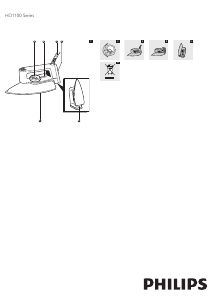


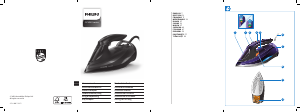
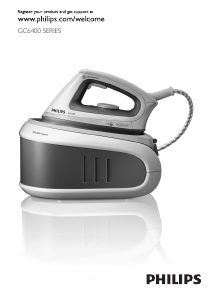
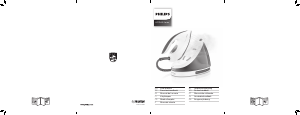
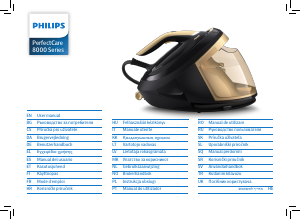
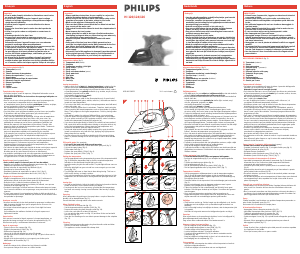
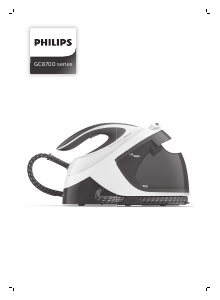
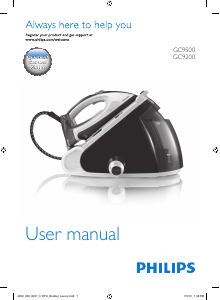
Joignez-vous à la conversation sur ce produit
Ici, vous pouvez partager ce que vous pensez du Philips HD1172 Fer à repasser. Si vous avez une question, lisez d’abord attentivement le mode d’emploi. La demande d’un mode d’emploi peut être effectuée en utilisant notre formulaire de contact.